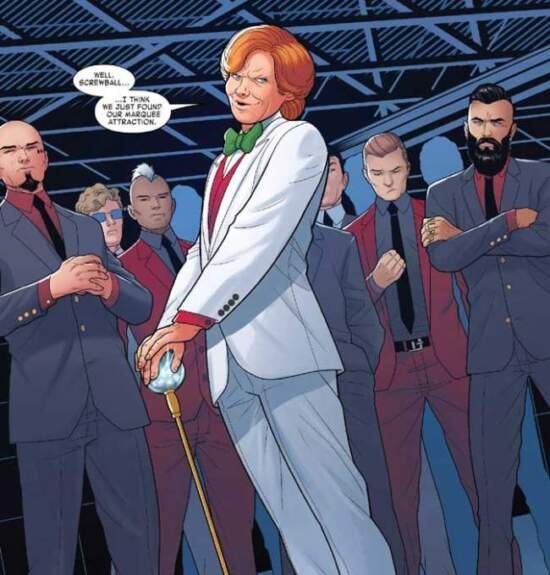Elektra #1
Marvel Comics, February, 2017
Writer: Matt Owens
“Elektra” #1 is a new comic book series from American comic book publisher Marvel Comics. The series revolves around the Greek female ninja assassin known by her first name, Elektra, who is an on-again, off-again ally/romantic interest and enemy of Marvel Comics’ blind acrobatic superhero Daredevil. Both of these characters have appeared in their own motion pictures and so have a degree of fame outside of the American comic book readership.
The comic opens its story with Elektra supposedly running away from the “demons of her past” (an assassin who has brutally killed hundreds of people) while trying to help those who are unable to help themselves. This time around, her quest to leave her troubled past behind leads her to Las Vegas. The character finds herself unintentionally at odds with a large syndicate that offers wealthy individuals the opportunity to hunt other humans for sport.
Along the way, Elektra also chances upon (and helps avenge) a female bartender who moved to Las Vegas with hopes of becoming an actress, only to be stuck in her current dead-end job and, worse, exploited sexually by her employer. Elektra’s off-panel murder of the bar’s owner and his bodyguards attract the attention of the crime syndicate. The organisation is then revealed to be led by Marvel Comics’ villain Arcade and a minor Spider-Man antagonist called Screwball.

The first issues of a new comic book series usually need some leeway in respect of writers finding their feet, and establishing a new narrative while trying to engage both existing and new readers. Unfortunately “Elektra” #1 fails at both. There is very little plot established in this first issue other than the facts that Elektra is an assassin, and that she seems bound to cross paths with Arcade’s criminal cartel. Further to this, the comic unnecessarily brings up elements from the character’s dark but dated history. In one of the early pages, Elektra experiences a brief flashback to her death at the hands of Daredevil’s principal villain Bullseye. This event happened a long time ago, both in terms of comic book continuity and actual publication. The emotional wasteland of Elektra’s personality, and the various other cruelties (and a second death) in between should probably have militated against the effects of that horror.
Additionally, Elektra’s death at Bullseye’s hands does not have any bearing on the story, nor does it hold any particular interest to new readers. The character’s current sojourn into Las Vegas’ neon-lit, sinful underworld lacks any explanation as well. New readers are likely to wonder what exactly is Elektra running from, or for that matter, who Elektra is. None of these are made particularly clear in the comic. Someone who is not already interested in Elektra will be quickly lost or disinterested.
The revelation of Arcade’s involvement, and the tease of an upcoming showdown with Elektra was unexpected, but only because that particular villain has no history with the title character. Arcade first appeared in the pages of Marvel Team-Up in 1978, and thereafter usually fought Marvel Comics’ ever-growing group of mutant superheroes called Uncanny X-Men. Arcade came into notoriety during the intense and exceptionally well-written title “Avengers: Arena” (2012), penned by Dennis Hopeless.

In this series (openly modelled on the novels “Battle Royale” and “The Hunger Games”), Arcade abducted and was responsible for the ugly and calculated deaths of eight out of sixteen teenaged superheroes – an effort at murder almost unmatched in the generally altruistic environments of American superhero comics. In many ways, because of that notoriety, Arcade is the star of the show in this title. Take away Arcade from the story, and you have nothing but a generic story that uses plot elements already seen or read somewhere else.

